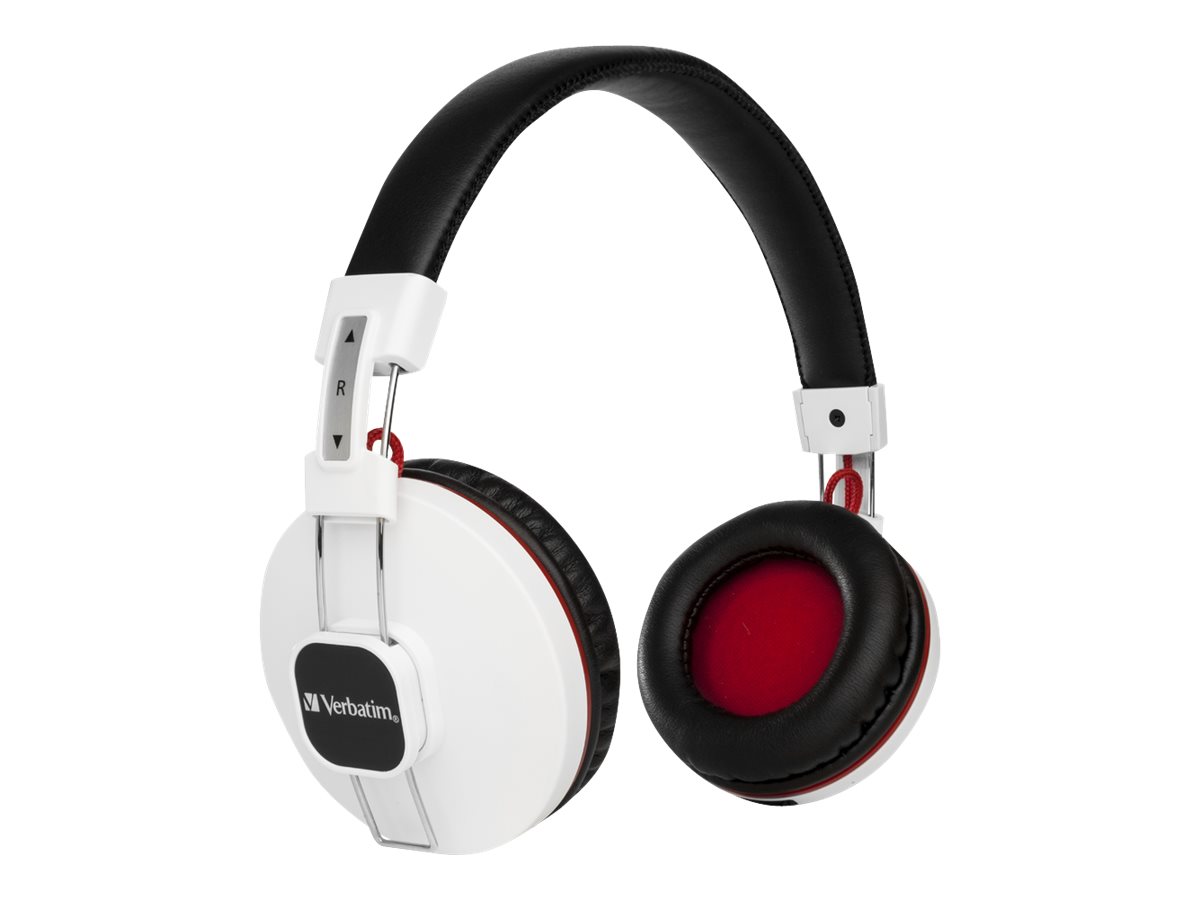
Get the key specs, technical data, ratings and full review of Verbatim all in one place. Compare your selected model with other alternatives and give your decision on the best headphones a solid base with our comprehensive overview.
design and dimensions sound quality microphone remote control battery and charging
| DESIGN AND DIMENSIONS Verbatim |
|---|
| Product Type | Headphones - Bluetooth - wireless | |
|---|---|---|
| Recommended Use | TV, portable electronics |
The wireless headphones Verbatim allow unrestricted movement, which increases the comfort of using the headphones. This feature is particularly popular with headphones for casual use. However, a certain limiting factor of wireless headphones compared to wired ones is a certain delay in sound transmission between the source and the headphones (but almost indistinguishable for the average user) and the need for regular charging. Unlike wired headphones, wireless headphones are charged separately.
This type of headphones has a design that surrounds the entire ear to improve isolation from external noise. As a result, they provide a great quality of listening without interference. However, unlike on-ear headphones, they are usually heavier and less suitable for frequent wearing.
| SOUND QUALITY Verbatim |
|---|
| Headphones Form Factor | Full size | |
|---|---|---|
| Connectivity Technology | Wireless | |
| Wireless Technology | Bluetooth | |
| Sound Output Mode | Stereo | |
| Sensitivity | 96 dB | Worse than 83 % of headphones rated. |
| Impedance | 32 Ohm | |
| Diaphragm | 40 mm | Better than 75 % of headphones rated. |
| Magnet Material | Neodymium |
The sound quality can be affected by many factors. The Verbatim reaches the sensitivity values of 96 dB. The sensitivity of the headphones expresses the ability of the headphones to pick up the signal from the source and reproduce it with sufficient volume. The higher the sensitivity, the more easily the signal is converted to sound and the louder the headphones are able to play at a lower power consumption. It is important to remember that high listening volume can consume more energy from connected devices. So if you want to listen to music from your cell phone, it's better to choose headphones with low sensitivity to avoid draining your phone's battery too much. Headphones with a lower sensitivity value (around 85 dB) are better suited for listening in quiet environments, while medium values (around 90 dB) allow for quality listening in noisy environments such as public transport or cafes. Headphones with a high sensitivity value (100 dB or more) are designed for use in really noisy environments such as concerts
The device connected to the headphones also plays a role most times. The lower impedance value (approximately 100 to 150 Ohms) is suitable for playback from mobile phones, laptops or other portable players that do not have a powerful enough amplifier. The lower impedance will ensure that the required volume level is achieved with less power, thus extending the life of the player. However, at the same time, with lower impedance, there is more distortion of the sound. Headphones with a higher impedance of around 250 Ohms and above are then more suitable for playback from really powerful signal sources or using a headphone amplifier, otherwise the sound coming out of them might not be loud enough. At the same time, higher-impedance headphones will also ensure less distortion in the sound. In the case of these headphones, the impedance reaches the 32 Ohm value.
The headphones are composed of many various components, one of the most important is the diaphragm. Diaphragm transforms the electrical signal into sound and therefore its quality affects the overall listening experience. There are three types of diaphragms: thin, medium-thick, and thicker. A thin 6 mm thick diaphragm responds quickly to high frequencies but less sensitively to bass. The medium-thick 10 mm diaphragm provides a balanced sound profile, allowing you to enjoy both bass and treble. The thicker 20 mm diaphragm is more sensitive to higher frequencies but has a poorer bass response. These headphones are equipped with the 40 mm.
| MICROPHONE Verbatim |
|---|
| Form Factor | Built-in |
|---|
| REMOTE CONTROL Verbatim |
|---|
| Controls | Answer/end, play/pause, next/previous track |
|---|
| BATTERY AND CHARGING Verbatim |
|---|
| Battery Type | Headphone battery rechargeable | |
|---|---|---|
| Battery Life | 20 hours | Better than 71 % of headphones rated. |
| Charging Time | 4 hours | Worse than 89 % of headphones rated. |
In terms of headphone battery life as a significant factor in the purchase decision, it depends on what you want to use the headphones for and potentially how often you will be able to recharge them. Headphones with up to a few hours of battery life are more suitable for home use as they will require more frequent charging. Headphones with a battery life of around 10 hours or more are already more suitable for commuting and shorter journeys. However, nowadays you can also find headphones on the market that have a battery life in the higher tens to hundreds of hours. In this case, you do not have to worry about your headphones simply running out of power on longer journeys, and you will not have to deal with constant recharging. The battery life of the Verbatim reaches up to 20 hours.
Charging time is 4 hours.
Similar Headphones
Other Verbatim Headphones